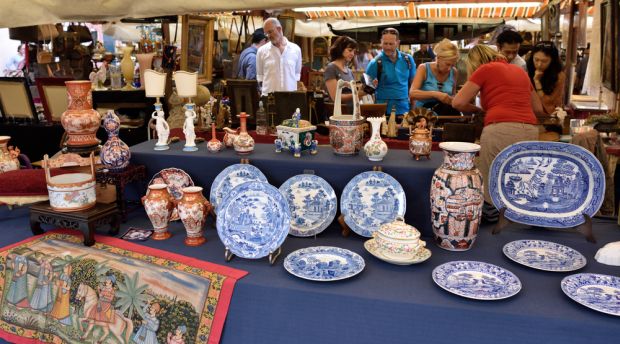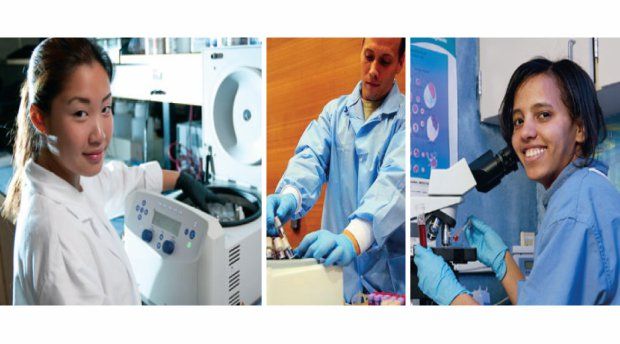Photographer Jobs and Careers: Photographer Job Description
Post Views 22Composing a picture involves choosing a particular subject and presenting the subject in such a way that it achieves the desired effect. To do this, the photographer must creatively apply her technical knowledge of light, camera settings, lenses, film, and filters. Photographers use a wide variety of lenses and filters designed for close-up, mid-range or long distance photography.
Nearly 50 percent of all photographers are self-employed and most specialize in commercial or portrait photography or photojournalism. Commercial photography involves taking pictures of merchandise, buildings, machinery, fashions, livestock, and groups of people to be used in advertisements, marketing reports, brochures, catalogs, and postcards. Editorial and industrial photographers work with the same subjects, but editorial photographers’ work is usually used in magazines and newspapers and on book covers, and industrial photographers’ work is usually used in reports and to evaluate machinery or products used. Portrait photographers largely work in their own studios, although some do work on location, taking pictures of individuals, families, and small groups. Some photographers specialize in school or wedding photographs.
Photojournalists often face significant danger in attempting to take pictures of newsworthy events, people, places, and things for newspapers, journals, and magazines. Some photojournalists also work in the field of educational photography, preparing slides and film strips for use in the classroom. Still others become aerial photographers, taking photos from airplanes for industrial, scientific, military, or journalistic purposes. Scientific and biological photographers provide images for science publications, research reports, and textbooks. Archeological photographers take pictures of finds in situ. Finish photographers photograph horse races as the animals cross the finish line. Motion picture photographers film movies, commercials and television programs.
Photographers work long and irregular hours and sometimes have to be available on short notice. They must be able to work under tight deadlines and enormous pressure. Most, especially photojournalists, travel frequently. Self-employed photographers enjoy a much more flexible and relaxed schedule, but even they spend enormous amounts of time trying to expand their client list.
Paying Your Dues (Major Employers)
Skill, creativity, training, and determination are the keys to success in this profession. No formal education is necessary, but for the photographer who intends to specialize in areas such as scientific or industrial photography, a college degree in the area of specialty is recommended. Photojournalists are often expected to have some background in journalism.
Photographers need to have good manual dexterity, and good color vision and eyesight. They must also possess certain personal traits such as artistic sensibility, creativity, and reliability; and enjoy working with detail. They should have an appreciation of light and shadow, an eye for form and line, and a distinctive and creative approach to photographs. Because success in this field is closely tied to experience and exposure, aspiring photographers are advised to serve internships or apprenticeships with experienced photographers to acquire broad technical knowledge of the field and the practical experience that comes with handling many different kinds of cameras and equipment. Apprentices are trained in darkroom techniques, lighting and background, and the use and setup of camera equipment. Those who are interested in setting up their own studios should prepare by taking business and marketing courses and some public relations courses to be able to sell their skills and increase clientele.
Associated Careers
Photographers who grow tired of the business or wish to hold a more steady job as well as being photographers can use their skills as graphic artists or in the art departments of publishers, magazines, newspapers, or advertising agencies. Becoming developers is another option for those photographers seeking to expand operations. Some teach photography. With additional training, photographers can become cameramen.
Past And Future
Photography first developed in the mid-nineteenth century. Early photographers captured images on heavy plates and printed them on sepia-toned paper. Now cameras have been simplified to their bare essentials with film and a lens and aperture in cardboard boxes that can be recycled once the film is developed.
The growing use of visual images in areas such as education, communication, entertainment, marketing, research and development should continue to drive the demand for innovative and skilled photographers. The increasing use of computers in photography will create another growth area for those in the field.
Quality of Life
Two Years Out
At this level, the photographer is still learning everything there is to learn about the business. The newcomer should still be apprenticed to a more seasoned photographer. She may be a proficient photographer, but as yet has not acquired enough experience to compete against the more experienced and versatile photographers in the profession.
Five Years Out
At the five-year level, the self-employed photographer is slowly building a reputation and scouting for more clients. If he is lucky, some of his work may have been placed in magazines and trade journals, a significant step. Photographers should consider signing with stock photo agencies which grant magazine and other clients the rights to an individual’s photographs on a commission basis. Some photographers work in-house at magazines, newspapers, or are one of a stable of professionals at large photography businesses that specialize in weddings and events.
Ten Years Out
Photographers have usually set up their own studios by this point. The now highly experienced photographer is firmly established on the road to success. The ten- year veteran has significant professional contacts that will lead to bigger and more high-profile assignments. She has more pictures published in magazines and journals.
Professional Profile
| # of people in profession: | 120,000 |
| % male: | 60 |
| % female: | 40 |
Professionals Read
Shutterbug
Professional Photographer
Photographist Forum
Books, Films and TV Shows Featuring the Profession
The Eyes of Laura Mars
The Girl in the Picture
The Bridges of Madison County
The Work of Ansel Adams
Major Employers
| Glamour Shots 100 Cambridge Side Place Cambridge, MA 02141 Tel: 617-374-9900 Fax: 617-374-9208 Contact: Pam Masters |
Associated Press 184 High Street Boston, MA 02110 Tel: 617-357-8106 Fax: 617-338-8125 Contact: Dan Hansen, Photo Editor |
You’ll Have Contact With
Advertising Executives
Event Planners
Graphic Designers
Journalists
Major Associations
| American Society of Magazine Photographers 419 Park Avenue South New York, NY 10016 Tel: 212-614-9644 |
Professional Women Photographers, c/o Photographic 17 West 17th Street 4th Floor New York, NY 10011 Tel: 212-255-9678 Fax: 212-620-0999 |
American Council for the Arts 1 East 53rd Street New York, NY 10022 Tel: 212-223-2787 Contact: Membership Department |



 What Types of Marketing Positions Are Available?
What Types of Marketing Positions Are Available?  How to Ace a Dental Hygienist Interview
How to Ace a Dental Hygienist Interview  Profiles of People Who Work At Home
Profiles of People Who Work At Home  How to Get a Job on a Cruise Ship: What it is Like Working on a Cruise Ship
How to Get a Job on a Cruise Ship: What it is Like Working on a Cruise Ship  Becoming an Art Dealer: What it is Like Having a Career as an Art Dealer
Becoming an Art Dealer: What it is Like Having a Career as an Art Dealer  What Does a Medical Laboratory Technician Do?
What Does a Medical Laboratory Technician Do?  7 Jobs for People Who Want to Work in Tech but Aren’t an Engineer
7 Jobs for People Who Want to Work in Tech but Aren’t an Engineer  Jobs That Allow You to Work Remotely
Jobs That Allow You to Work Remotely